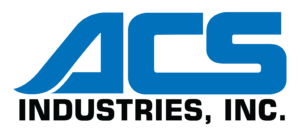Employee Spotlight:
Ryan Abranovic on The Future of Hydrogen and ACS.
How did you end up at ACS?
Ryan: I was interested in studying international business and the German language. I found a program that would allow me to study international business at Bryant University while taking German classes at Brown, so off to Rhode Island I went. As I was finishing my degree, I was given an opportunity to conduct an international business audit for ACS. My findings lead to an expansion project in which I scoured eastern Europe for the best location and the best people to support ACS’s European business. We ended up finding an empty factory building in a university town in Romania. The building was standing alone in a field and was already painted ACS blue. It seemed like it was meant to be. ACS’s presence in Romania and Europe has been growing ever since.
How has your role at ACS evolved since you joined the team?
Ryan: I started in a market evaluation role – my first project being the Romania expansion. I was heavily focused on the high-level of ACS’s global strategy. I then spent four years working out of Plant 2 in Mexico where I switched to an operations focus. Here, I gained valuable perspective on ACS’s supply chain, and the details of our day-to-day manufacturing workflow.
Favorite ACS memory? Proudest moment so far?
Ryan: One of my proudest moments at ACS so far actually happened when I returned to the Romania factory in 2020. In 2015, when we first purchased the property, I remember working with Madalina Buza (who is still the head of our Romania plant) and having to run out to a store to get a folding table and two chairs so we could get some work done. No one else was in the building. I returned in 2020 as part of an ERP implementation and found the factory bustling with activity and doubled in size. It is a great feeling to know that you played a part in bringing jobs and opportunities to areas that need them.
What are you passionate about?
Ryan: I am passionate about green energy. New tech coming out like AI… it all needs energy. The more you learn about where this energy traditionally comes from the more disturbing it gets. We need clean energy sources for all the technologies we want to enjoy in the future and this transition cannot happen soon enough. We’re all going to have to work together to see these changes become a reality for the earth and our environment.
How did ACS decide to enter the green energy manufacturing space?
Ryan: We realized that some of our core product lines had become mature. In considering new markets, we realized that many of our strengths were exactly what was needed to push the green energy industry forward. The industry requires high quality, precision manufacturing, as well as scalability, and dedicated R&D focus, all of which we have been honing for decades. There seemed to be more opportunity at every corner. We found ways to deliver optimized components for Alkaline Electrolyzers that were dominant in Europe, for PEM Electrolyzers in the US, for fuel cells, lightning strike protection and many other applications. Our experience and infrastructure set us up to be very competitive in this market from the outset.
What is the greatest challenge facing ACS in green energy?
Ryan: The greatest headwinds facing ACS in its expansion into the Green Energy market relate to the nature of this burgeoning industry. Many of the products and technologies thought to be the future of green energy have only been produced in a lab setting and it will be a tremendous challenge to achieve the same results in mass production. ACS’s experience in scaling production from prototype in the automotive industry gives us a sizable advantage in this area. Another challenge lies in educating the public about this field. Energy users around the world need to understand the importance and the impact of the green energy movement to foster demand and favorable government intervention. I’ve also seen many green energy conversations turn into debates over technology “A” or “B”, but the reality is that we will need many of these technologies for their individual strengths and benefits to decarbonize the industries of the world.
Where Do You See ACS in 10 Years?
Ryan: In ten years, ACS’s components will be in systems used by producers and users of hydrogen around the world. Our experience as a leading supplier to the automotive industry will provide competitive advantages in terms of product and process that will allow us to maintain a significant market share. Within 10 years, ACS’s new American production facility will be up and running, creating jobs and bringing a positive economic impact to a carefully selected US location. We will remain focused on our R&D efforts and accelerate the pace of our ground-breaking internal discoveries. Research will be focused on the reduction or elimination of rare-earth and platinum group elements that are typically required in the production of hydrogen.

